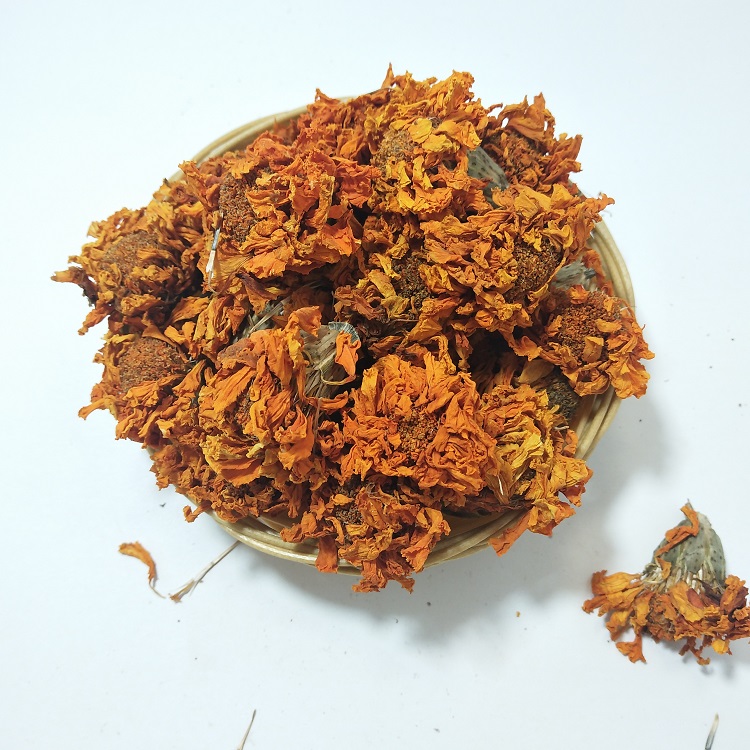
Marigolds, also known as Calendula officinalis, are a type of flowering plant that belongs to the Asteraceae family. They are native to the Mediterranean region and have been cultivated for thousands of years for their medicinal properties and decorative value.
Marigolds are annual or perennial herbs that grow up to 30-60 cm tall. The leaves are green and feathery, arranged in a rosette at the base of the stem. The flowers come in various colors such as yellow, orange, red, and white, and are usually 2-5 cm in diameter. They bloom from early summer to fall and attract pollinators like bees and butterflies.
In addition to their beauty, marigolds have many uses in traditional medicine. The petals and leaves are rich in antioxidants, anti-inflammatory compounds, and essential oils that can help treat skin conditions such as eczema, psoriasis, and acne. They are also used to make herbal teas and ointments for wound healing and pain relief.
Marigolds are easy to grow from seeds or transplants and prefer well-drained soil and full sun exposure. They can be planted in gardens, containers, or window boxes and require regular watering and fertilization. Deadheading spent flowers will encourage more blooms throughout the season.
Overall, marigolds are not only a colorful addition to any garden but also a versatile plant with numerous health benefits.








